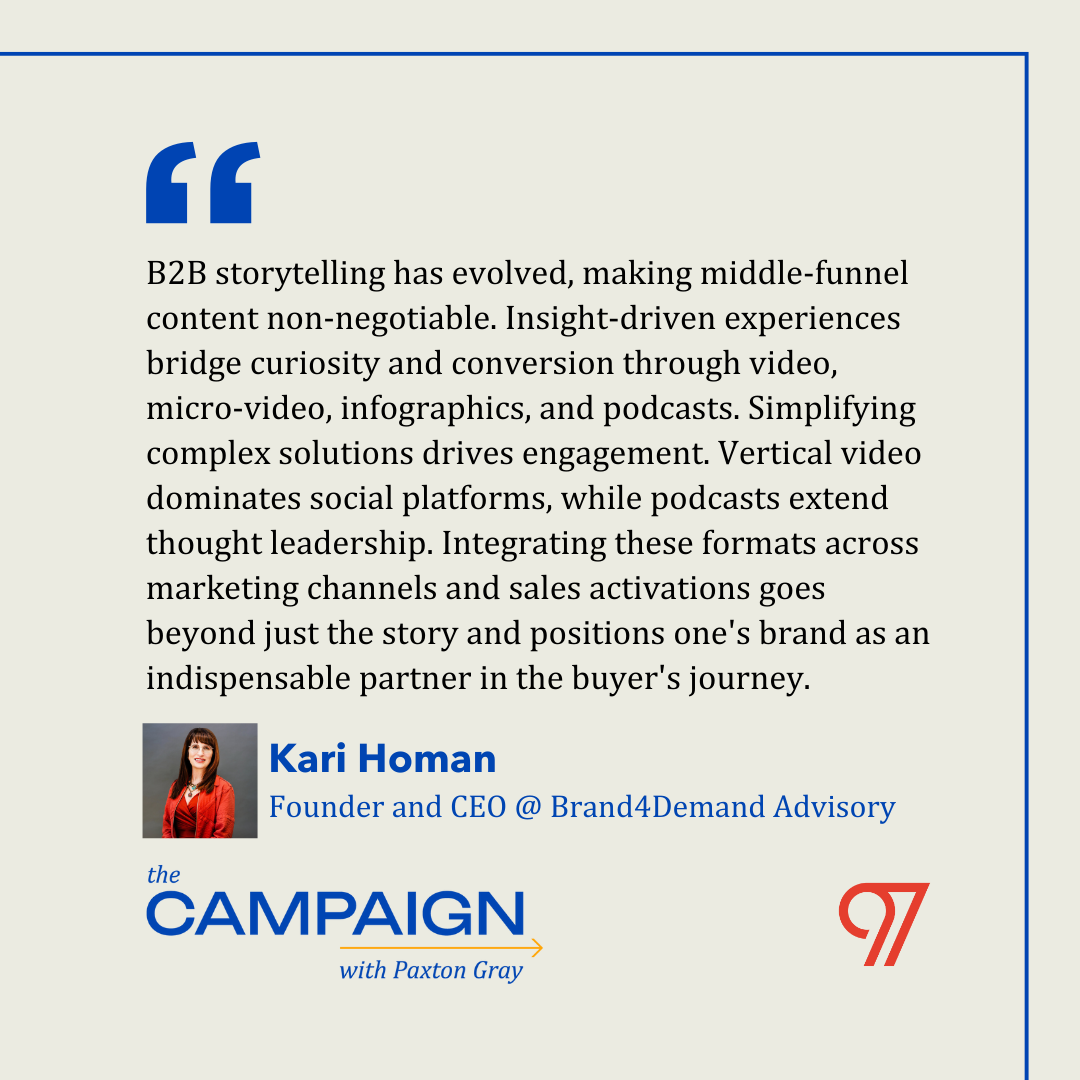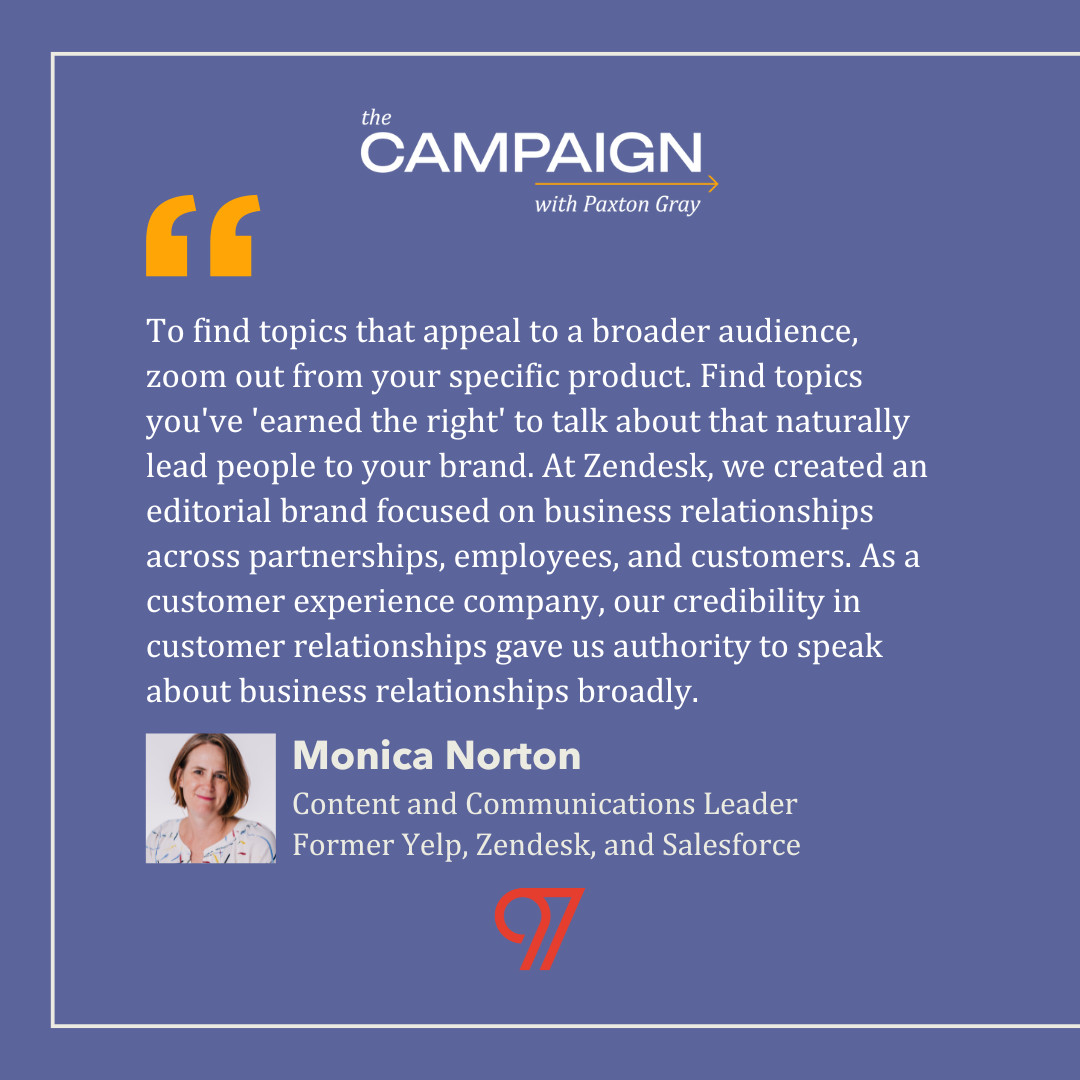Here's a quick exercise: Take a look at your competitors' ads. Now remove their logos. Can you tell them apart? If you're like most B2B companies, probably not. This striking similarity in B2B marketing isn't just a missed opportunity – it's a weakness in an increasingly competitive landscape.
While many B2B marketers focus on optimizing channels and tweaking conversion rates, they're overlooking one of the most powerful tools: storytelling. And contrary to what you might think, this isn't just fluffy marketing speak. Recent research has shown that storytelling in B2B advertising has an even stronger effect on C-level decision-makers than on other buyers, particularly in building trust and fostering long-term brand advocacy.
Think of your customer journey as a story – because that's exactly what it is. From the first touchpoint to the final sale, you're not just moving prospects through a funnel; you're engaging them in a narrative about transformation and possibility.
High-funnel brand touchpoints – whether they're bus shelter ads, digital campaigns, or conference presentations – act as your story's "book cover." They're not meant to tell the whole tale but to intrigue and invite your audience to learn more. As Tara Ramroop, Director of Content Marketing at Braze, explains, "It's like the blurb that you see when you're kind of shopping for something to read. Or maybe you weren't shopping for it at all... but there was something about it – the brand, the tagline, the copywriting, the voice – that drew you in."
But here's where many B2B companies falter: they start strong with brand awareness, jump straight to the hard sell, and leave a massive gap in between. The result? Sales teams complaining about tepid leads and prospects who aren't ready for conversations. When this happens, it's often because the story didn't make sense – the chapters were out of order, or worse, missing entirely.

Traditional B2B marketing follows a familiar pattern: company blog → CTA → gated asset → sales funnel. While this approach has worked in the past, it's becoming less effective as buyers grow more sophisticated and their journeys more complex.
The solution isn't to abandon these tools but to rethink how we use them. Instead of leading with what we want to say, we need to start with what our audience needs to hear. This means taking an audience-focused approach rather than a content-focused one.
"Companies always have something to say," Ramroop notes, "but it doesn't do service to the story that is connective or inspiring to lead with yourself." The key is demonstrating that you understand what keeps your prospects up at night and showing how you can help them work better, live better, and lead better.

Modern B2B purchases rarely involve a single decision-maker. Instead, you're typically dealing with a buying group – a cast of characters, each with their own concerns, priorities, and perspectives. The IT manager, marketing director, and legal counsel might all be involved in the same purchase decision, but they're looking at it through very different lenses.
This is where deep audience analysis becomes crucial. Instead of segmenting purely by demographics or firmographics, focus on understanding behaviors, desires, and pain points. What keeps each stakeholder up at night? How do they collaborate with others in their organization? What does success look like from their perspective?
The phrase "operationalizing storytelling" might sound like an oxymoron, but it's essential for scaling your narrative approach. This means establishing processes and systems that help you tell consistent, compelling stories across all touchpoints.
Some key components include:
Tools like Asana for project management, a robust digital asset management system, and analytics platforms like GA4 can help you manage and measure your storytelling efforts. However, remember that the tools themselves matter less than having everyone aligned on using them consistently.
If you're thinking this all sounds great but impossible to implement with your current resources, take heart. You don't need perfect conditions to start improving your storytelling approach. Start small, measure what works, and build from there.
Begin by analyzing your current content performance. What stories are resonating with your audience? Where are you seeing engagement drop off? Use these insights to inform your next steps, and don't be afraid to get scrappy with your implementation.
Remember, you can build your storytelling infrastructure while maintaining your current marketing operations. As Ramroop advises, "Crawl, walk, run. You'll get to a place where you'll have your process and it runs like clockwork, and then you can tweak that process as you go."
In today's B2B landscape, standing out means more than having the right features or the best price. It means telling a story that resonates with your audience on both rational and emotional levels. By taking a systematic approach to storytelling while maintaining flexibility and creativity, you can create marketing that doesn't just inform or persuade – it inspires.
Start by examining your current customer journey. Where are the gaps in your story? Which chapters are missing? Then, begin filling those gaps with content that demonstrates genuine understanding of your audience's challenges and aspirations. Remember, the goal isn't just to tell any story – it's to tell the right story to the right person at the right time.

